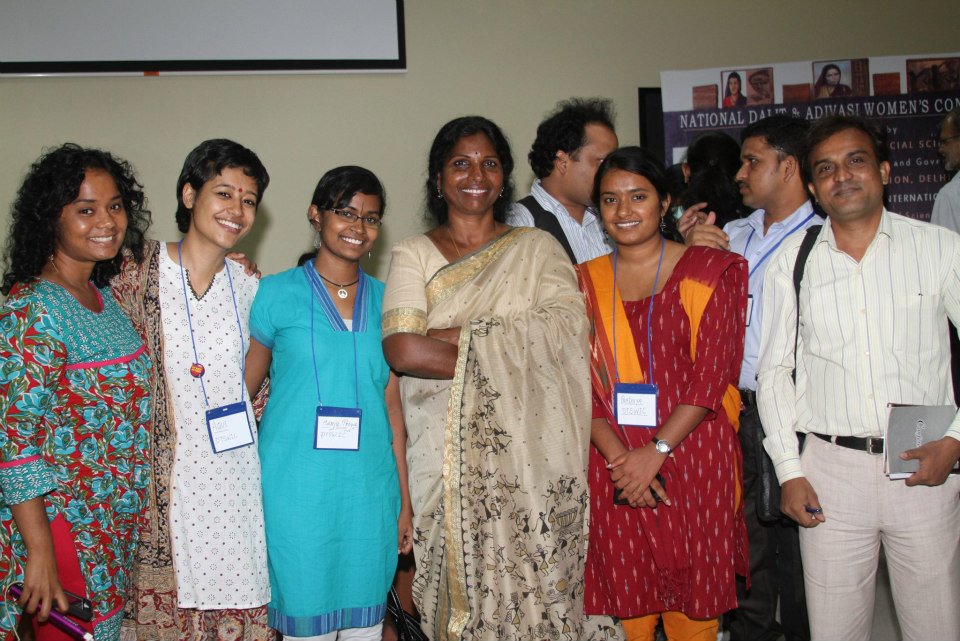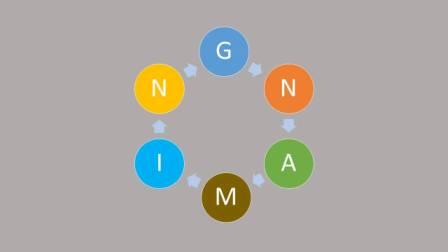Ravi Chandran, of the video news journal ‘Dalit Camera: Through Un-Touchable Eyes‘, interviewed Dr K. Satyanarayana, Associate Professor, Department of Cultural Studies, English and Foreign Languages University (EFL-U) on the recent Ambedkar cartoon controversy. Here’s the first part of the transcript of the interview:
Ravi Chandran: Sir, how do you see the division between left-liberal intellectuals and Dalit intellectuals on the Dr. Ambedkar cartoon controversy in the NCERT test book?
Dr K. Satyanarayana: I have been following the discussion on this controversy. I was really surprised that there is this very sharp divide between the left-liberal intellectuals and Dalits. These two groups have taken entirely different positions on it. And if there is anything to be said about this controversy, the most striking feature is the position taken by the liberal and left intellectuals and especially those who are part of making these textbooks. It is shocking to me.
{youtube} WHRN30NATe0 {/youtube}
Let us outline what is the position of left-liberal intellectuals on this controversy and what are one or two Dalit intellectuals and other dalit activists are saying, what are the two different kinds of views and why there is division between the two.
On one hand liberal-left intellectuals broadly, except one or two, mostly academics based in Delhi, argue that NCERT textbooks represent a pedagogical revolution, these are revolutionary and are very different from earlier textbooks, (and) provided first time space for Dr Ambedkar. These textbooks cultivate critical thinking among the children. So because these are innovative and contribute to critical thinking, any opposition or any criticism of these textbooks amounts to curbing critical thinking, curtailing freedom of expression, amounts to censorship. I think this is their broad viewpoint.
So they argue, because these text books are so good and so creative and what Panikkar calls it..pedagogical revolution, so anybody who opposes it, by their logic, is objecting to this revolution. So they are very disturbed by this opposition and (by) criticism from dalits or any other section about these textbooks. I am really troubled by this kind of response– that you prepare these textbooks and also say that the textbooks are open for discussion, feedbacks.. you can debate and next generations of textbooks would carry the changes. But now you are really reacting by saying that there is nothing wrong in the textbooks. These are revolutionary and slight opposition is seen as anti-revolution.
I think that is where one should locate the distinction between dalit intellectuals and left-liberal intellectuals because they are taking such a non-negotiable and undemocratic position that these are revolutionary kind of textbooks and there is no debate possible on them, whether on cartoons or on contents.
For me who followed this discussion on certain blogs, it looks like that these textbooks are sacrosanct and you cannot touch them. Broadly this is the opinion. In fact after Mandal, I think this is the first time that left-liberals and Gandhians and Marxists to other ML groups came together unanimously in response to dalit protests to say that these textbooks are good and revolutionary and there is nothing wrong in them. Until now I have not come across any single intellectual from left-liberal background that clearly made this point that if there is a problem with this cartoon then we would like to rethink about it while retaining the textbooks and if there is any dalit objection then we want to discuss and want to think about it. I have not seen anyone saying this.
They want to, simply, turn this objection of Dalits into a controversy about NCERT textbooks, a controversy about pedagogical revolution being stopped by the government. See government intervention, government banning, government censorships– all these come later. First the controversy begins with RPI raising the objection, then Thiruma raising it in the parliament and now many Dalit scholars writing on this. Now the problem with liberal-left is that they don’t want to address the objections raised by Dalits but only want to talk about how the state is trying to censor these textbooks, how this is an attack on the autonomy of NCERT and these textbooks are revolutionary in content, providing space for Ambedkar for the first time. All these arguments may be correct but Dalits’ objection is also very important and that has to be addressed.
So there is tension.. developed because the left-liberal wants to remain silent on the Dalit objections and defend the text book showing state as a main enemy, the state is censoring, all parliamentarians are bad people and so let us save our textbooks, so you have online petition and campaigns. Dalits are not saying that these text books are wrong and all these textbooks are not pedagogically innovative on so on. They are only saying that there is something wrong the way Ambedkar has been represented in the cartoon. This is the issue they are raising and because this issue was not addressed or taken into consideration..even today they are not willing to acknowledge publicly that we want to rethink so by not acknowledging this they are actually providing the scope for the state to intervene.
In fact I will accuse the liberal and left intellectuals for providing a chance for state to intervene, ban and kill the pedagogical revolution because of their response. Even those who prepared these textbooks, Suhas Palsikhar and Yogendra Yadav, known for their liberal views and have been arguing for dalit rights for long, should have come forward and said that we want to rethink the inclusion of this cartoon and if Dalits are objecting we could remove them. This could have saved the textbooks.
But by not saying this, they allowed state to intervene and create this controversy. So there are several issues in this controversy. The controversy is not only about censoring of text books, their withdrawal, attack on critical pedagogy but also about dalit objections on this cartoon. So you cannot just collapse it all under into state censorship.
The left-liberal intelligentsia, historically, does this always whenever dalits raise their issues. They collapse it into saying fight against imperialism is important or fighting against state censorship is important. This argument.. now dalit scholars and activists will not accept. You really have to address the dalit concerns.
That is why there is this tension between the Dalit view and liberal left scholars. These scholars are either silent on what dalits are raising or have not successfully, convincingly answered to the points that dalits are raising except saying that Athawale group is a fundamentalist group or dalit parliamentarians or even all other parliamentarians don’t know anything about the text books and are doing vote bank politics. This will not do. We know that all politicians do vote bank politics. We know that Dalit organizations mobilize dalits through raising their sentiments by popular causes. Apart from that, both parliament and central government.. Athawale group knows that there is a large dalit constituency; there is a large dalit public who will respond to any controversy related to Ambedkar.
So if that is the context, as a liberal left intellectual, why don’t you also see that there is a dalit constituency reacting to this controversy– so what is your answer? Your answer simply should have been that if you are not happy with this kind of representation, we would like to rethink and you should have been even willing to withdraw this cartoon. That would have saved the textbook and we could have thought of different ways of introducing Ambedkar. So obviously there is a problem with the way you want to introduce Ambedkar. I think this is the key issue.
Ravi Chandran: You were talking about left-liberal response to this controversy, even (during) Mandal, many were against reservations and now again they are going against the concerns being raised by dalits. Every day a new article is coming from dalits trying to explain their stand, still there is no effect. Every day different person intervenes on their side but gives the same version. How do you see this?
Dr K. Satyanarayana: During the Mandal discussions, lot of left-liberal scholars opposed it and were not willing to even discuss the issue of caste but after Mandal, there has been lots of rethinking. Many left liberals started writing about caste, discussing Ambedkar and taking on dalit questions. But still I feel there are a lot of limitations in terms of learning from dalit activists, dalit intellectuals. Their understanding is still very limited and this is what this particular cartoon controversy clearly illustrates.
However strong supporter you are of Ambedkarite thinking and some of the dalit concerns and so on..because of your own left-liberal understanding, maybe because you all belong to upper caste background, it is very difficult to understand certain issues from a dalit perspective. They really failed to appreciate the dalit viewpoint on this and it is really shocking to me. Especially the people who have been strongly supportive of dalit causes like Aditya Nigam and so on. These are the people who were really in the forefront in advocating Dalit cause many times. Many times I have seen that Dalit viewpoint is caricatured, distorted and it is actually made to appear as part of something else and actually they don’t want to directly address the issue.
In this controversy, what Dalits are saying — there is a cartoon and there is a problem in the cartoon. They are simply saying that Ambedkar’s contribution in making of the Constitution is not fully appreciated in this cartoon and textbook. It doesn’t represent Ambedkar properly. There is something wrong.
The simple answer would have been, you can argue that we are properly representing and if representation is a problem we will rethink about it. But instead of that, to say that we have freedom of expression, to say that these text books are a pedagogical revolution and save the text books— this way of responding is a very typical way of silencing of caste issue, typical way of not addressing the dalit issue. Historically, not addressing of dalit issue has happened in this manner. You actually generate another discourse on the same issue.
What is the discourse generated on this when Dalits raised this issue, you generated discourse about critical pedagogy, discourse about state censorship, discourse about autonomy of NCERT. These are all democratic issues. These are all issues where dalits have no objection. But there is a dalit objection to this particular cartoon but the left-liberals do not see this point.
I really want to emphasize the significance of Dalit viewpoint on this cartoon issue. If you simply look at it as some dalit political party creating controversy, creating vandalism and anarchy in Pune, Mumbai or Delhi.. if that is how you see then you really fail to see the significance (of the) issue. If you think that dalit politicians and others are trying to get some mileage and dalit political parties are being used by Congress or Sibal or by the Indian state and dalits are falling into this trap and actually helping the state to ban the textbooks.. If this is the argument then you are really not able to see the dalit viewpoint and you fail to see that there are two ways of looking at any particular kind of reality.
And there is this group of people in the public now– like dalit activists, dalit intellectuals and dalit public, they have the right to interpret this textbook you have made. You made this book for dalits and OBCs also. They have the right to raise this issue. They have the right to say it in public. They have the right to interpret it. And that point is important and you have to acknowledge it. There was objection from dalit parliamentarians but what left-liberals have failed to grasp is that this objection has now gone beyond these people and that there is a whole group of people – dalit activists, scholars, dalit intelligentsia – that is responding to this issue now. They are responding in terms of whether Ambedkar is properly represented or not so if any one looks at this cartoon they all found it objectionable for various reasons.
It is true that you are using this cartoon just as a pedagogical tool but Ambedkar’s representation is highly loaded, politically charged in the Indian context. Historically Ambedkar was not represented, his ideas were not represented, he was completely excluded and the only way he survived was through iconisation, through statues, through various types of symbols. The dalits have, more or less, carried Ambedkar from 50s to the 90s and then because of visible dalit movement he came into the mainstream. Ambedkar is still alive through icons, not through textbooks, not through academic knowledge production, not through any other source, he is still alive and available through iconisation.
So that’s why dalits are very angry when their icon is desecrated, when you represent Ambedkar in a manner..you don’t like. So you have to really see that when you try to represent Ambedkar, the representation is already loaded, loaded in the sense that there have been attacks on Ambedkar, like Arun Shourie wrote the book that Ambedkar did not write the constitution, Ambedkar was only a clerk who put together some documents, he had no talents.
This view is shared by many people who are anti-dalit, anti-Ambedkar. Anyone who is aware of dalit politics since 80s, 90s must be aware of the fact that any representation of Ambedkar has to be done in a very conscious and systematic manner otherwise it is liable to be misunderstood. You are referring to Ambedkar’s role in constitution making and there is a cartoon which says that there is a delay, there is a slowing down, and Nehru had to push Ambedkar to do this, this is what you are suggesting. And on the other hand in the textbook there are no substantial arguments to suggest that Ambedkar really contributed in the making, reasons for delay. There is no substantial discussion in the textbook.
In public domain, there is a lot of attack on Ambedkar, his statues, on his ideas and there is no public recognition on all that he has contributed, including the making of the constitution, so dalits are touchy on this kind of issues. So you know that you are attempting to represent Ambedkar in a very loaded kind of context, this textbook writers should have been aware because the cartoon is read in that context. It is going to be read in the context of Arun Shourie’s Worshipping False Gods, in the context of non-recognition of Ambedkar’s ideas.
Today there is a debate on NCERT. How many dalits are there in the NCERT, how many Dalits are there in the Textbook committee, the monitoring and preparation committee, except one Gopal Guru, how many dalits are there? One Gopal Guru is there and you are repeatedly saying that since Gopal Guru was there, what we have done is correct. This is not a proper argument. There is only one Gopal Guru, but structurally NCERT has remained an upper caste institution. Structurally, political science still remains an upper caste domain. Political science only discusses dalits as vote banks. Dalit political thinking is still not part of political science. In fact all the left-liberal people who have responded are mostly from political science.
Please read the second, concluding part of this transcript here.
Dr K.Satyanarayana, with Susie Tharu, edited the anthology of Dalit writing ‘No Alphabet in Sight: New Dalit Writing from South’, published by Penguin India in 2011.
[Thanks, Anoop Kumar, Ratnesh Kumar, Manju Rao and Gurinder Azad for working on this transcript]
~~~
Please also read other articles published on Round Table India on the same issue:
‘The cartoon controversy: Inside the mind of one ‘fanatic’ Dalit – I’ by Anoop Kumar,
‘Whipping up ‘critical pedagogy’: Uncritical defense of NCERT’s violence‘ by Savari,
‘The Cartoon, the Classroom and the Idea of India‘ by N. Sukumar,
‘Of critical pedagogy and rational thinking‘ by Kshitij Pipaleshwar,
‘The caste-neutral whip and other jokes‘ by Kuffir and
‘Thol. Thirumaavalavan writes to Kapil Sibal and Sukhadeo Thorat‘










